Choosing the right fuel biocide: Bellicide vs. Pri-ocide and Aquatreat
The changes to contemporary diesel and biodiesel fuels have created a huge need for fuel biocides to treat and protect those fuels in storage. Fuel...
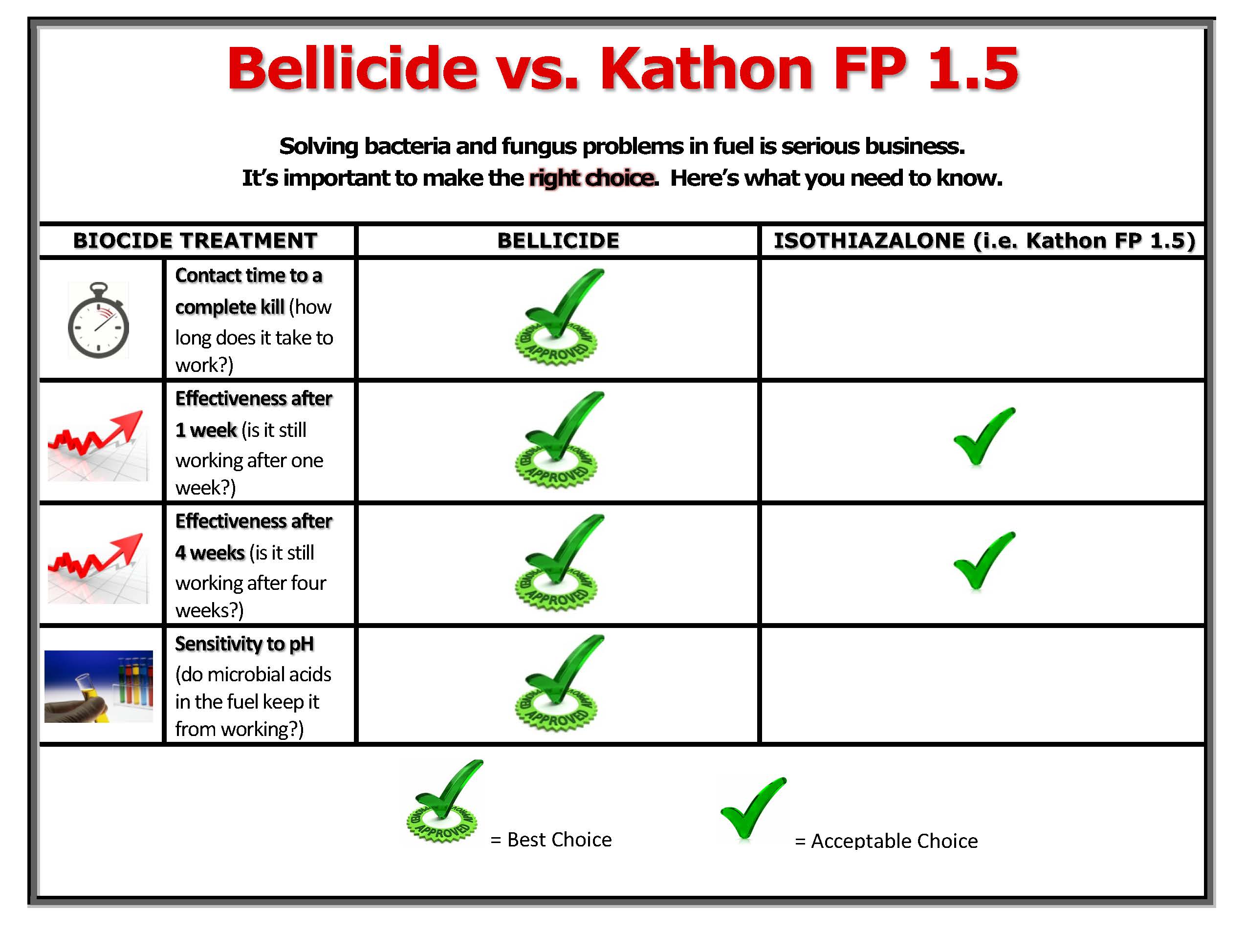
As fuel professionals across the nation check fuel storage tanks that may have been sitting for years, they're only now realizing the extent of fuel microbes problems that the industry faces. Changes to contemporary diesel and biodiesel fuels have created a huge need for biocides to treat and protect those fuels in storage. Fuel biocides are the only solution for microbial problems. Controlling water is important, but biocides are the only solution to kill and get rid of microbes once they are there.
So the question is, which solution to choose? A fuel biocide is the only thing that will kill and get rid of microbes in fuels and tanks. But not all biocides are the same and there are major differences in performance that are important to consider.
Kathon FP 1.5 is one such prominent biocide readily found in the marketplace. It utilizes a chemistry called "isothiazolone", a type of molecule widely used in anti-microbicide applications (plus shampoos and hair care products). Its base formulation is manufactured by Dow Chemical and is in the same family as Dow Chemical’s Fuel Saver biocide. It has many white label versions, as well as a wide distribution network by other companies. In comparison, Bell Performance has offered its biocide solution Bellicide since 2010, for stored fuel users needing an effective solution to knock out fuel microbial problems. Bellicide utilizes a thiocyanate chemistry.
All this is well and good but does nothing to help someone make a good decision on what's better than something is. And it's important to get this kind of thing right, given what's at state (costly expenses if the problem isn't solved). And just because something is well marketed or you've heard about it more often than something else, neither one means it's actually any good. In order to make the right choice, you have to know what makes a good biocide over a bad one. You should look for these characteristics:
Kills quickly - Once mixed into the fuel or fluid, the most effective biocides will achieve the most complete kill rate in the shortest time.
Maintains a complete kill for the longest period of time - The best biocides will maintain their complete kill rates for the longest time possible. How long? Biocides don't last forever. In fact, four weeks is a good baseline to shoot for.
Resistance to pH changes - The best biocides will work equally well in both acidic (pH < 7.0) and basic (pH > 7.0) environments. This is important because fuels and liquid with severe microbial contamination will tend to be acidic, due to the acids produced by microbial respiration as they grow and thrive in the liquid.
Effectiveness in both fuel and water phases - Especially important when using biocides in stored fuel. The presence of a water phase (a layer of water under the fuel) is always associated with microbial growth because microbes need the water phase to grow and thrive. Some biocides react with water, reducing their effectiveness in that critical area.
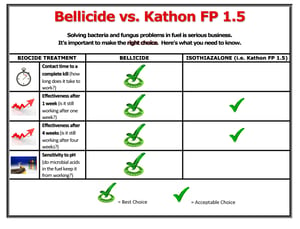
Now that we’ve defined what separates a good biocide from a less-than-stellar one, we can compare Bellicide to Kathon FP 1.5 with respect to performance in these critical areas.
Effectiveness in water phase – This is not listed on the infographic but should be commented on. Bellicide and Kathon FP 1.5 both maintain good effectiveness in the presence of water.
.
Because the purpose of a biocide is to kill microbes, it’s important to look at how effective they are at killing microbes and maintaining a microbe-free environment for as long as possible. We can see some interesting things if we look at some comparative kill studies using different treat rates and different strains of microbes. P. aeruginosa is a common bacteria that grow well in storage tanks and H. resinae is a fungus that does the same.
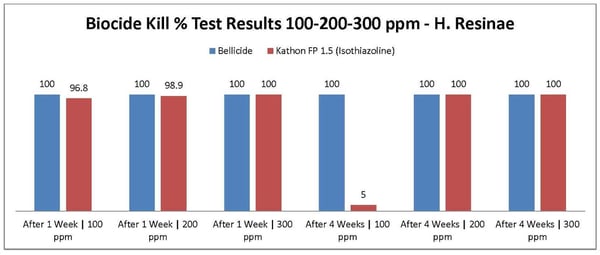
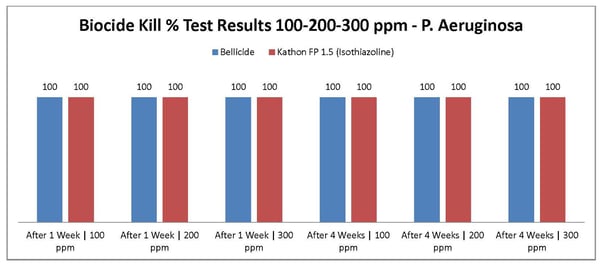
The summary of the data: the Bellicide chemistry provided the best efficacy at all levels tested. The Kathon FP 1.5 chemistry did reasonably well (better than some other chemistries tested), but could not match Bellicide’s kill effectiveness for four weeks at the lowest treat rate.
More specifically, you can see that both Bellicide and Kathon maintained close to 100% microbial kill through one week, and accomplished this at the lowest treat rate - 100 ppm or 1 oz. to 80 gallons.
But measurements after four weeks start to show some difference. Bellicide maintained the full 100% kill rate in both kinds of microbes through four weeks. And Kathon was successful on the bacterium after four weeks. But it could keep all of the fuel fungus out at the lowest treat of 100 ppm. Once they increased the concentration to 200 ppm, Kathon was successful with the fungus as well.
These comparative results are better for Kathon than for some others tested (Biobor, Pri-ocide, Aquatreat). But they still show that Kathon falls short of Bellicide's effectiveness after four weeks. And maintaining a full kill rate for as long as possible is an essential hallmark of a good biocide choice.
These results should be clear - Bellicide is the better biocide choice.
Note: all product names are registered trademarks of their owners.
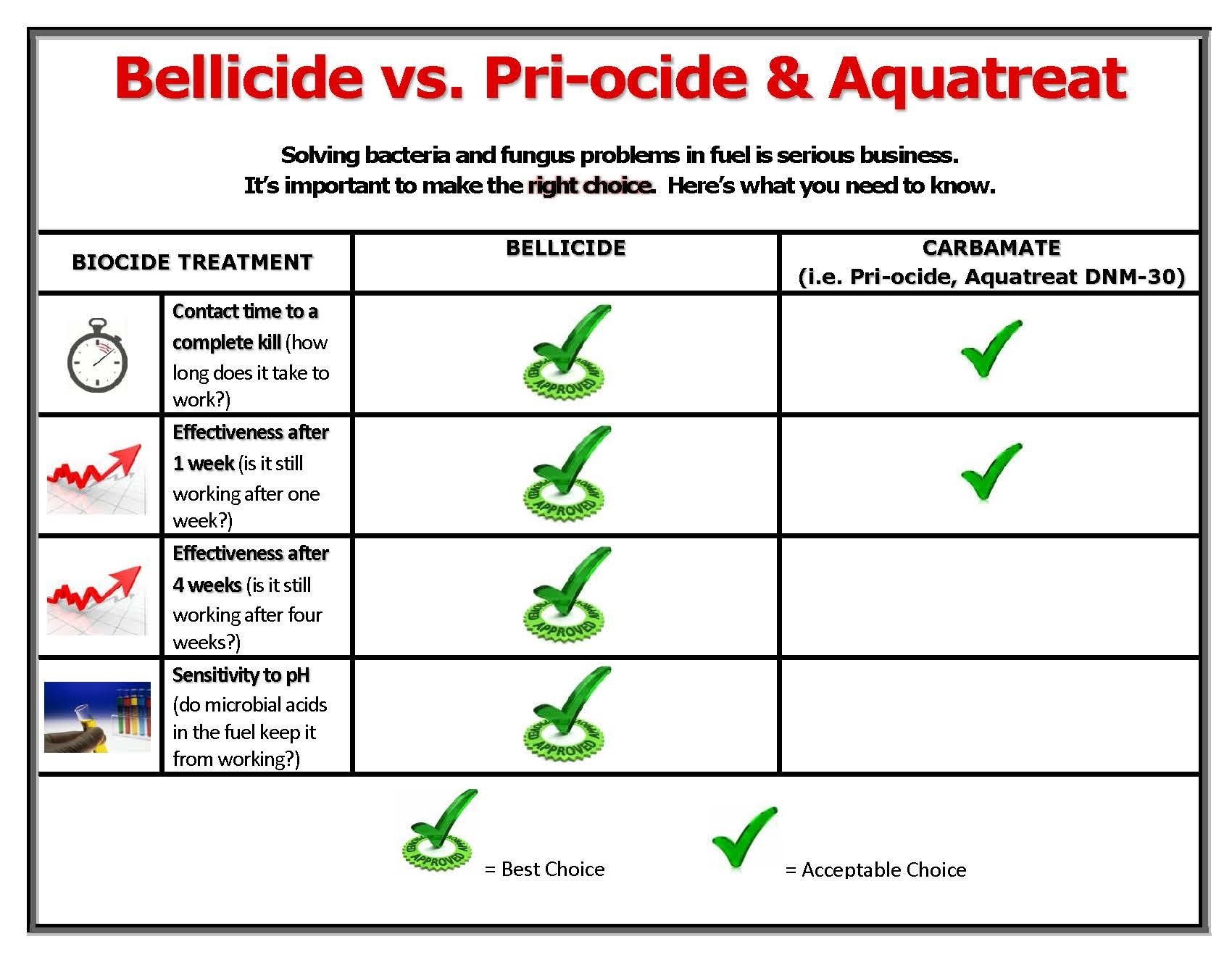
The changes to contemporary diesel and biodiesel fuels have created a huge need for fuel biocides to treat and protect those fuels in storage. Fuel...
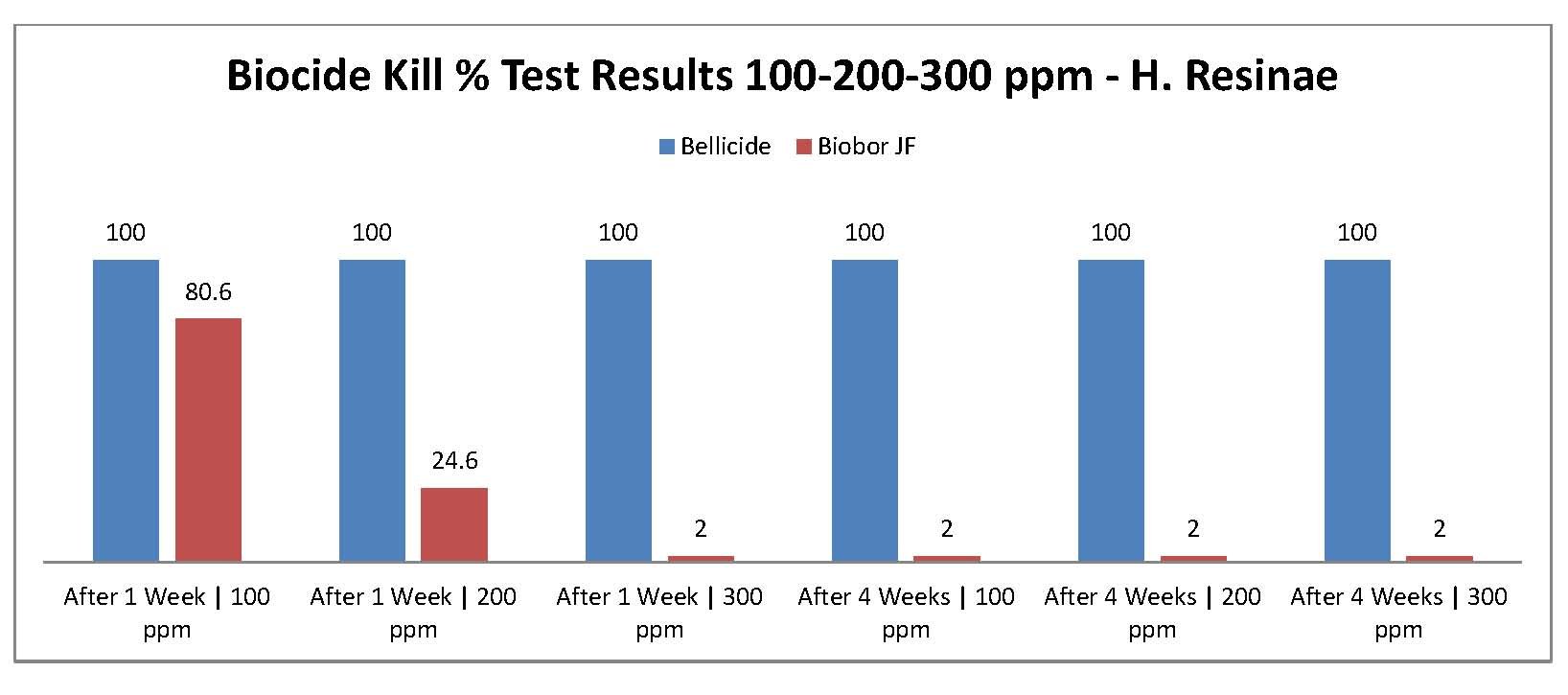
With the differences between farm fuels of today and the past, fuel biocides are an essential and necessary part of the arsenal employed by...
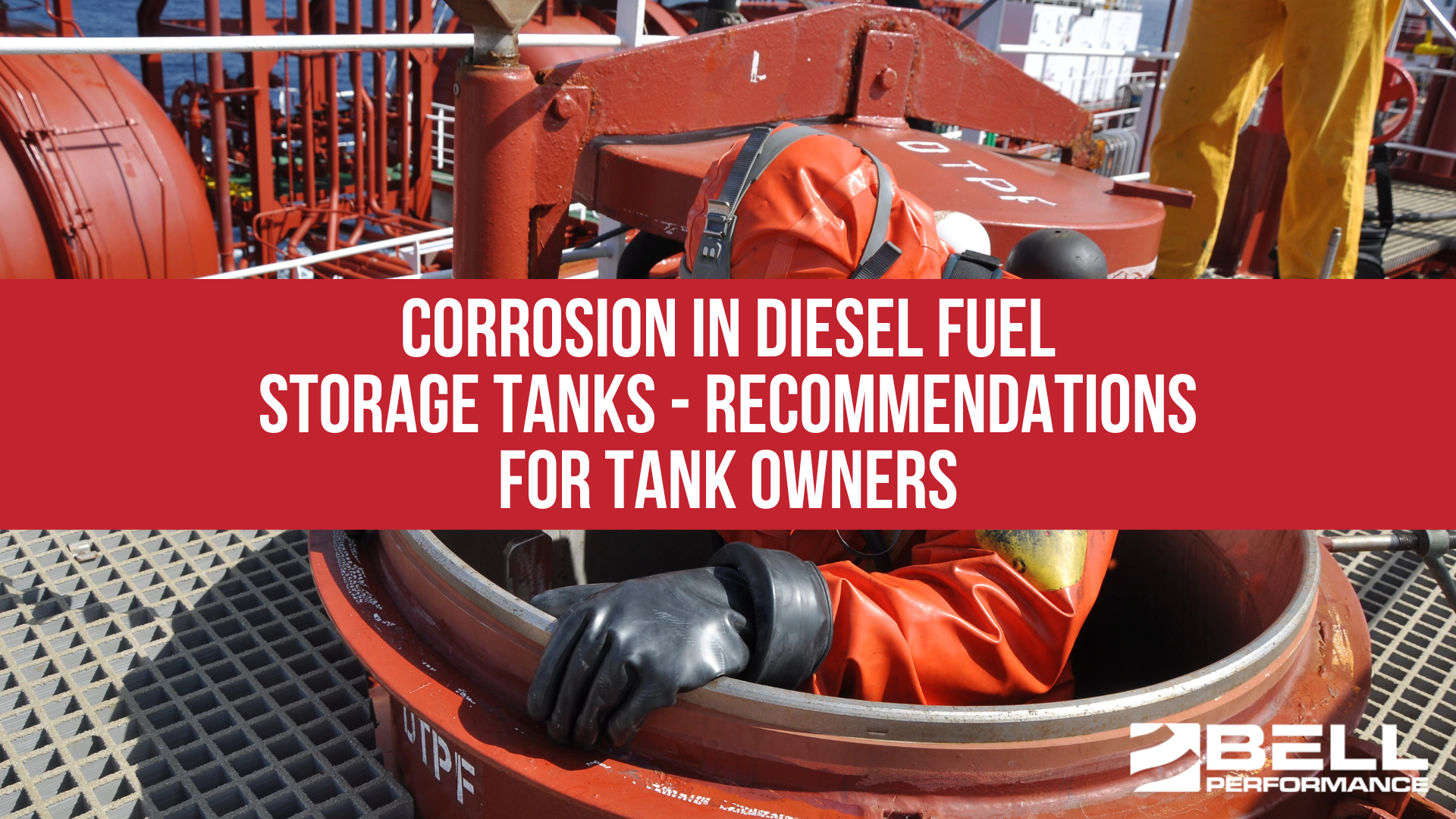
One of our most popular webinars from the past dealt with such an important issue - Diesel Fuel Storage Tank Corrosion - that we thought it was...